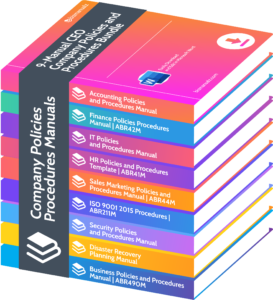What Are The Key Components of a Workflow?

A process workflow is made up of various pieces that work together to make productivity and efficiency optimal. These pieces are the sequence of tasks, people, resources, and tech. A structured workflow follows a logical order of tasks. Each step builds on the one before it and works towards the end goal. This way, mistakes are minimized and effectiveness is maximized. What are the key components of a workflow?
Workflow Essentials
People need to have the right skills and be assigned to the right tasks. Good communication, collaboration, and coordination among team members is necessary for a smooth workflow. Resources like equipment, materials, and tools are also needed. They must be available when and in the amount needed to keep tasks moving forward. Allocating and using resources correctly increases productivity.
Technology also plays an important role. Automation tools, software, and digital platforms make processes easier and more efficient. Project management software helps organize, track, and monitor tasks. Integrating with other systems allows data to be shared and updated in real-time.
Organizations wanting to continuously improve must understand workflow components. Improving task sequences, leveraging human potential, allocating resources well, and embracing tech can help streamline workflows and increase productivity.
McKinsey & Company conducted a study which showed that investing in better workflows can result in up to 30% increase in productivity. This emphasizes the importance of recognizing and utilizing effective workflow components.
Definition of a workflow
A workflow is a series of steps to get a task or goal done. It makes sure work is efficient and productive. A good workflow simplifies complex tasks, improving communication and collaboration. Task allocation is important. Match tasks to the right people to get the job done properly and on time.
Process documentation is also key. Writing down every step ensures everyone understands the process. This stops mistakes and keeps things consistent. Automation is becoming more important. Technology can automate boring tasks, giving employees time to do more useful work.
To show the value of a good workflow, I’ll share a story from when I worked at a marketing agency. We had a client who needed regular updates on their social media campaigns. Our workflow was disorganized and we were late with reports and approvals. We changed it by assigning tasks, documenting processes, and using automation tools. The result was amazing: our team was more responsible, communication improved, and projects were much more efficient.
Key components of a workflow
A workflow has various parts that make it work well. These main components are the core elements for completing tasks and projects in an organization.
To get a better idea of these key components, let’s look at this table:
| Component | Description |
|---|---|
| Tasks | The activities or assignments that form the workflow |
| Participants | The individuals or teams doing the tasks |
| Timeline | The schedule or order for completing the workflow |
| Communication | The channels used for exchanging information |
| Resources | The tools, equipment, and materials for task completion |
| Decision-making | The process by which choices and determinations are made |
These components together make up a successful workflow. Each plays an important role in making sure there is effective collaboration, productivity, and timely completion of tasks.
Also, flexibility is another key component. In today’s ever-changing work environment, workflows must be able to adapt to changes, unexpected events, and new project requirements.
Did you know workflows have been used across many industries for a long time? An example is the assembly line created by Henry Ford in the early 1900s in car manufacturing. This new approach became a model for production processes everywhere (source: Time).
Benefits of a well-designed workflow
A well-crafted workflow brings lots of perks. Streamlining processes and setting up clear guidelines provide:
- Improved Collaboration – Structured framework for assigning, completing and reviewing tasks.
- Reduced Errors – Detailed instructions ensure accuracy.
- Increased Accountability – Individuals take ownership of their tasks.
- Enhanced Communication – Dependencies are highlighted and progress updates are frequent.
- Faster Decision-Making – Unnecessary delays are eliminated.
- Better Overall Outcomes – Resources are optimized efficiently.
Plus, workflows can identify bottlenecks, adapt to changing needs, and scale as workloads grow. It’s no wonder that businesses, since Henry Gantt first introduced the Gantt chart in the 1920s, have used workflows to stay productive and successful.
Case studies: Successful workflow implementations
Various industries have widely adopted successful workflow implementations. These case studies show us how workflows can be used to boost productivity and streamline processes. Here are some impressive examples:
- Company A: Manufacturing | Lean Six Sigma | Less Defects, Higher Efficiency
- Company B: Technology | Agile Software Development | Quicker Time-to-Market, Improved Collaboration
- Company C: Healthcare | Electronic Health Records (EHR) | Better Patient Care, Streamlined Documentation
These case studies provide great knowledge on successful workflow implementation. For example, Company A’s use of Lean Six Sigma led to a decrease in defects and better efficiency. Plus, Company B had many benefits from using Agile Software Development like faster time-to-market and greater collaboration.
If you want to gain the same success with your workflow implementation, here are some suggestions:
- Analyze processes: Examine your existing processes to find any problems and identify improvement areas. This analysis will help you create an effective workflow.
- Involve stakeholders: Include relevant stakeholders during the implementation process. This will ensure that everyone is on board and understands the objectives and advantages of the workflow.
- Provide training: Educate your employees on the new workflow. This will make sure it’s adopted easily and its potential is maximized.
- Regularly review and refine: Constantly evaluate your implemented workflow. Look for any weak spots or areas that need refinement. Doing this will ensure long-term success and continuous improvement.
By following these tips, companies can execute workflows that optimize their operations, increase productivity, and help their business grow.
Common challenges in creating effective workflows

Continuous Improvement
Creating workflows can be tough in some organizations. Here are four common challenges:
- Clarity: It’s important to know what needs to be done and how. Vague plans make it hard to build workflows that match the organization’s goals.
- Communication: Good communication is essential. Poor communication leads to delays and decreased productivity.
- Resistance to Change: When introducing new workflows, people often don’t want to change their old habits. This can be a huge obstacle.
- Technology: Outdated or insufficient technology can make workflows less productive.
Organizations must address these issues to create successful workflows. Provide clear instructions, promote communication, encourage adaptability, and invest in technology.
Pro Tip: Get key stakeholders from different departments involved when creating workflows. This leads to comprehensive and effective solutions.
Tips for optimizing and improving workflows
For improved productivity and efficiency, optimizing and improving workflows is essential! Here’s how:
- Streamline processes. Identify problem areas and get rid of them. Streamlining processes can save lots of time and resources.
- Automate tasks. Technology can help with repetitive tasks, so employees can focus on more important stuff!
- Collaborate effectively. Have clear communication channels and encourage teamwork. This supports knowledge sharing and keeps everyone in sync.
Regularly review and update workflows to keep up with changing needs and technologies.
McKinsey & Company conducted a study which showed that companies who optimize their workflows can experience an increase of up to 30% in productivity.
Key Components of a Workflow
In the end, a successful workflow needs many elements that work together to guarantee a good and efficient task management. These include: clear goals and objectives, well-defined processes and procedures, efficient communication channels, accountability measures, and suitable tools and technology.
A noteworthy part of a successful workflow is setting clear goals and objectives. This includes recognizing the expected results of a project or task and dividing them into actionable stages. By creating goals that are specific, measurable, achievable, relevant, and have a set deadline (SMART), teams can stay focused and motivated throughout the workflow.
Also necessary are well-defined processes and procedures. These give a guide for how tasks should be done within an organization. Detailed documented workflows help stop confusion and enhance efficiency by ensuring that everyone knows their roles, responsibilities, and the steps needed to complete their tasks.
Efficient communication channels are vital in any workflow. Open lines of communication make it easier for team members to work together, allowing for exchanging of ideas, feedback, and updates. Whether through regular meetings or digital platforms, good communication guarantees that everyone involved in the workflow knows what is going on.
To maintain accountability in a workflow, it is important to set up systems for tracking progress and assessing performance. Introducing systems such as regular status updates or progress reports helps identify any problems or places where improvement is needed. By making individuals responsible for their assigned tasks and giving constructive feedback when needed, organizations can make sure that deadlines are met correctly.
Lastly, the tools and technology used in a workflow are just as important. The right tools can speed up processes, automate repetitive tasks, improve collaboration, and raise overall productivity. From project management software to communication platforms or task tracking applications – picking the right tools based on specific organizational needs is very important in optimizing workflow efficiency.
Pro Tip: When designing or improving your workflow process, ask for feedback from those involved in executing it regularly to guarantee continuous improvement over time.
Frequently Asked Questions
1. What is a workflow?
A workflow is a series of tasks or activities that need to be completed in a specific order to achieve a desired outcome. It involves the coordination of people, resources, and information.
2. What are the key components of a workflow?
The key components of a workflow include:
- Inputs: The resources or information required to start the workflow.
- Tasks: The specific actions or activities that need to be completed.
- Sequence: The order in which tasks are performed.
- Dependencies: The relationships or dependencies between tasks.
- Decisions: Points in the workflow where choices or decisions need to be made.
- Outputs: The end result or deliverables of the workflow.
3. How can workflows be represented or designed?
Workflows can be represented or designed using various tools such as flowcharts, diagrams, or specialized workflow management software. These visual representations help in understanding the sequence of tasks, dependencies, and decision points.
4. Why are workflows important?
Workflows are important because they help in improving efficiency, productivity, and consistency in business processes. They provide a structured framework for managing and executing tasks, ensuring that work is completed in a logical and organized manner.
5. How can workflows be optimized?
Workflows can be optimized by identifying bottlenecks, eliminating unnecessary steps or tasks, automating repetitive processes, and leveraging technology to streamline the workflow. Regular evaluation and improvement of workflows can lead to increased efficiency and cost savings.
6. Are workflows limited to specific industries?
No, workflows are not limited to specific industries. They can be applied in various sectors such as healthcare, finance, manufacturing, marketing, and more. Any process that involves a series of steps can benefit from workflow management.

















Leave a Reply